This is the final EDTC post for the semester.
Here is my summary of learning
It has been a blast to be in this class.
So long, farewell, auf wiedersehn!
Josh
The World is Yours to Explore
This is the final EDTC post for the semester.
Here is my summary of learning
It has been a blast to be in this class.
So long, farewell, auf wiedersehn!
Josh
This is the second to last post of EDTC 300.
I don’t read blogs all that much, so i’ll admit it was difficult to add comments to other blogs some days. The slideshow below shows some of the contributions I have made to other classmates learning posts.
I didn’t utilize Discord all that much, but this is one moment where I was able to help out
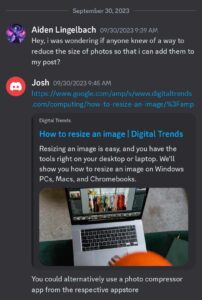
I believe I made good contributions to the learning project posts, ones that hopefully encouraged my classmates to keep pursuing their goal.
It was always fun to share my thoughts with my classmates whenever we were in the breakout rooms during class. Listening to other people’s perspectives was very insightful. I shared a resource or two during class, but unfortunately I can’t find them in the zoom recordings, as there was not an option to see the chat box.
Welcome ladies and gentlemen to the final stretch of this journey.
When I started this learning project at the beginning of September, I didn’t know where it would exactly lead me. I wanted to learn German so I could one day travel to Germany. From reading facts in museums to ordering a drink at a local brewery. I remember writing that first post with that ambitious goal in mind. To be honest, I wasn’t sure how much I would learn, given that I have a busy life both in school and outside. But throughout the semester, I endured and kept my committment to learning German to the best of my abilities or what time would allow me.
And let me tell you, it was worth it. Let’s take a look back….
Week 1 : Romancing the Germanic
I found my most consistent tool for learning/practicing German throughout the semester, Duolingo. Although I have my gripes with Duolingo, it kept me engaged and allowed me to practice the format of the language.
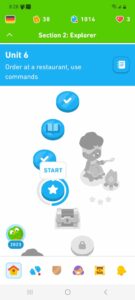
My progress as of Dec 12th
Week 2 : Grasping German Grammar (feat. Laura)
When it comes to German language, noun genders can be really confusing. There are no set rules, so most sites tell you to learn the gender with the noun as you go. And while that is mostly true, Laura’s German Grammar helped organize the noun genders into different topics, which was super helpful for me going forward.
Week 3 : The Conjugation Champ (ft. Decent quality video editing)
Conjuu was a helpful app that helped me practice german verbs. I also learned some video editing skills, which was not as daunting as I once thought it was.
Week 4 : Vocabulary List? Answer:Mango
Who doesn’t love free things from the library? I certainly do! I quickly learned the days and months of the year.
Week 5: Is Drops a [ka]hoot!? Tune in
As much as I found the app a bit disappointing, I realized that my learning system can’t heavily rely on visuals, or else I focus on learning the visuals themselves and not the words/phrases. It was fun learning about different hair styles though, haha
Week 6 : Domo arigato Mr. Roboto!
I never would have thought of the day of using AI to explore a language, but it was a unique experience. While I wouldn’t rely on it teaching me the language, it did provide some good resources and alternate ways of learning, such as songs and rhyme (something I didn’t even think of).
Week 7 : Memorize? How about Memrise?
I love this app. Listening to native speakers was such a refresher, especially since Drops and Duolingo both gave monotone robot voices. Learning vocabulary from short form video content was a cool way to keep people engaged whilst also learning! I learned enough vocabulary to get a beer! Haha
Week 8 : A Whole New World
I found a site that has a library filled with German content. I doubt I would have found this amount of content at the local Regina library. I can’t wait to come back to this site later when I have enough vocabulary to read a novel made for kids.
Week 9 : The Last Tool
Just recently, I found a Youtube channel that explains the language in a similar tone to Laura’s German Grammar from Week 2. The channel also has an app and website that helps new learners navigate through the german language.
Now, more than ever, I’m excited to continue studying the German language and improving that knowledge. Although I’m still a beginner and still have a lot more to learn, this project has really invigorated my love for languages again. Even though this learning project journey has come to a close, my eagerness to learn German will continue to thrive in the upcoming year.
Thanks to all for being with me throughout this journey.
Prost und Auf wiedersehn!
Josh
Welcome back! This is gonna be the last tool I share with you before the learning summary. And boy, it’s a good one.
Today I finally scoured the Youtube space. I was a bit daunted going into the Youtube space because it’s a very accessible tool that has an overwhelming amount of content. You could scroll through the various “learning german” youtube channels all day and not reach the end. It can be very time consuming to find a content creator that fits the need you are looking for.
By happenstance, one of the first videos I clicked was from the Youtube channel : Learn German with GermanPod101.com
I was intrigued with how they were doing the breakdown of each section, so I continued on. At 12:08, the section covered making apologies. The teacher explained the differences and contexts between entschuldige, entschuldigen sie and entschuldigung. I was immediately hooked after that, as some of the other resources I have used in the past did not explain it.
I soon looked at their other videos and playlists. They had vocabulary, listening comprehension and reading practice videos, for all different levels of learners. I also noticed they had a website and app. Of course, it was a free trial, but I wanted to check out what they had. It not only included videos that were not on the channel, but also lesson notes/transcripts and language tips. They had a flashcard system and a way to track your progress. You can also access assessments and a 1-on-1 teacher in the premium plus version, which I thought was pretty neat. It’s organized to really help a learner progress from a beginner stage to an advanced stage.
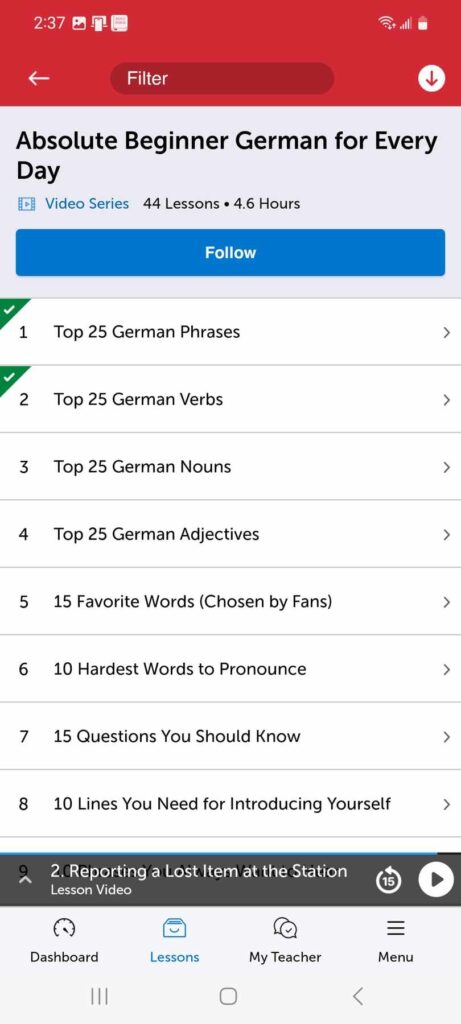
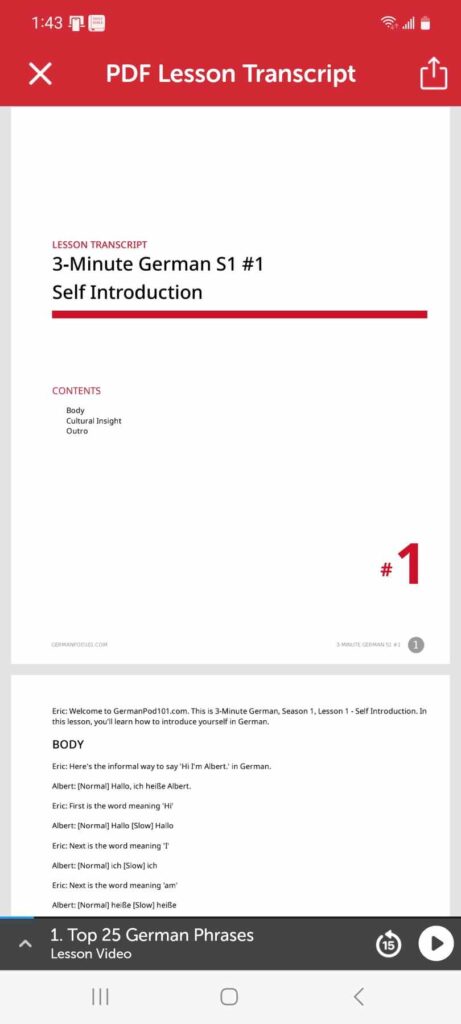
Overall, this is a good resource to use not only for memorization, but to understand the language itself. Also fairly accessible and can easily be put in the background while doing chores. 9.5/10
What kind of Youtube tutorials do you watch? Let me know!
Hey folks, long time no see! These past few weeks have been a gong show, but here I am again.
Have you ever found a resource and go – wow, where do I even start?
That is the question I faced this week as I looked into the other ChatGPT recommendation. Today, we’re looking at the Goethe Institut. When I first reached this website, it was all in German. One of my first thoughts was “Oh no, what am I getting into?”. Once google translated the page and I created an account, I realized what this was. It is an organization that is dedicated to providing resources and courses about the German language and culture.
I then discovered their library system, Onleihe. And wow, where do I begin? It essentially is like a library in almost every way, except it is mostly German content, ranging from books, to audio, to videos to music. There was so much to go through, but I thought I could try to read an easy kid level book. I chose “Zippel macht Zirkus”, which translates to “Zippel makes a circus”. I tried to read this:
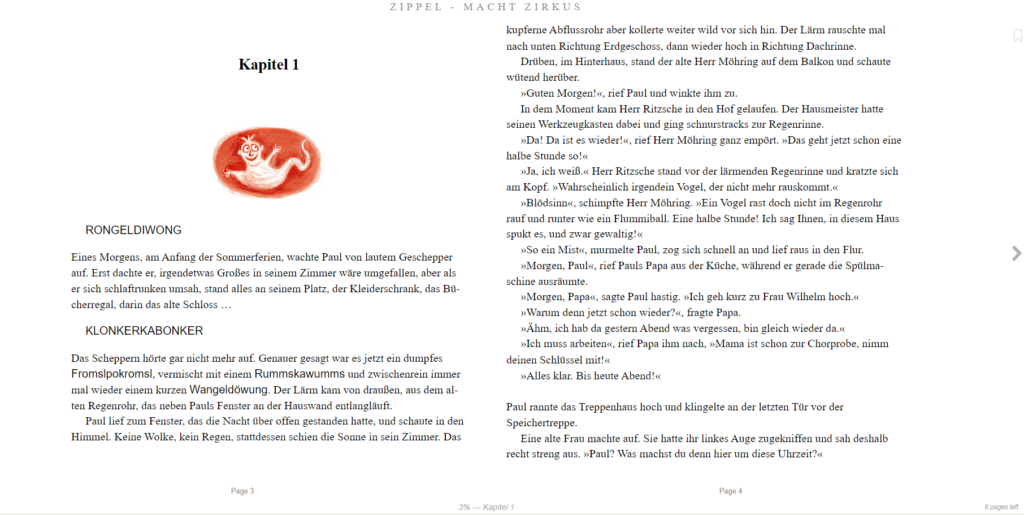
I was able to identify some words, but I clearly knew that I needed time to learn more vocabulary as a whole.
I then moved on to the video section. I found a movie called “Welcome to Siegheilkirchen”. It was a German film with English subtitles. It was really cool to not only watch a German-based animation film (which is a completely different experience from North American animation story-wise) but also being able to learn certain words and phrases from it.
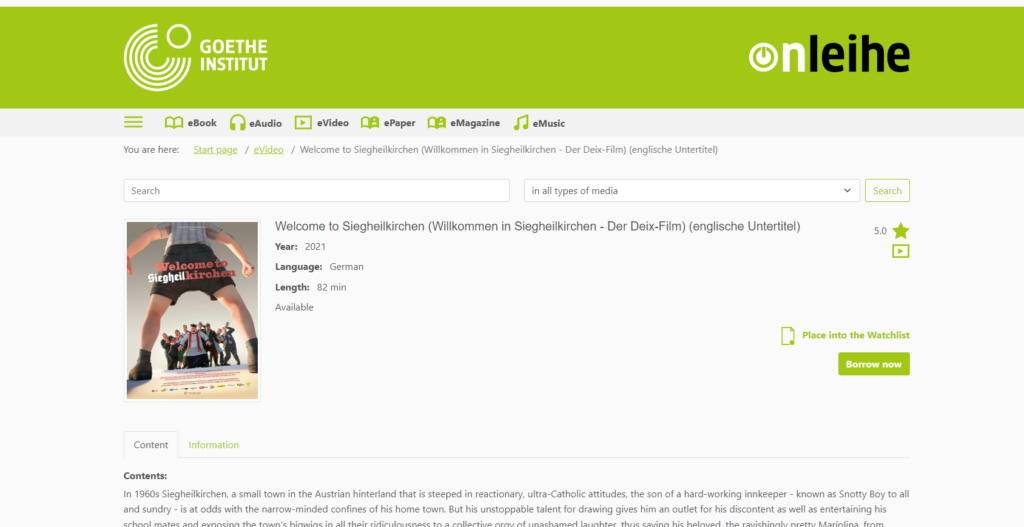
As much as this resource is leagues above me in terms of language sophistication, I know that I will come back to it over time as my learning progresses. I might not be able to read a children’s story right now, but I hope I can get to that point in the next year.
Have you tried to read a book or watch a movie in a different language?
The AI tool I chose to experiment with was Consensus. This AI tool helps users find papers related to the user question and gives a detailed summary of them. It lays out important elements like where it ranks in the hierarchy of evidence, methodology of the paper and how many times the paper was cited. It also provides a link to the actual paper if you wish to explore the paper further. Consensus can also analyze the papers and show a poll as to what the likely answer to your question will be. You can then see and read the different papers that show the different views.
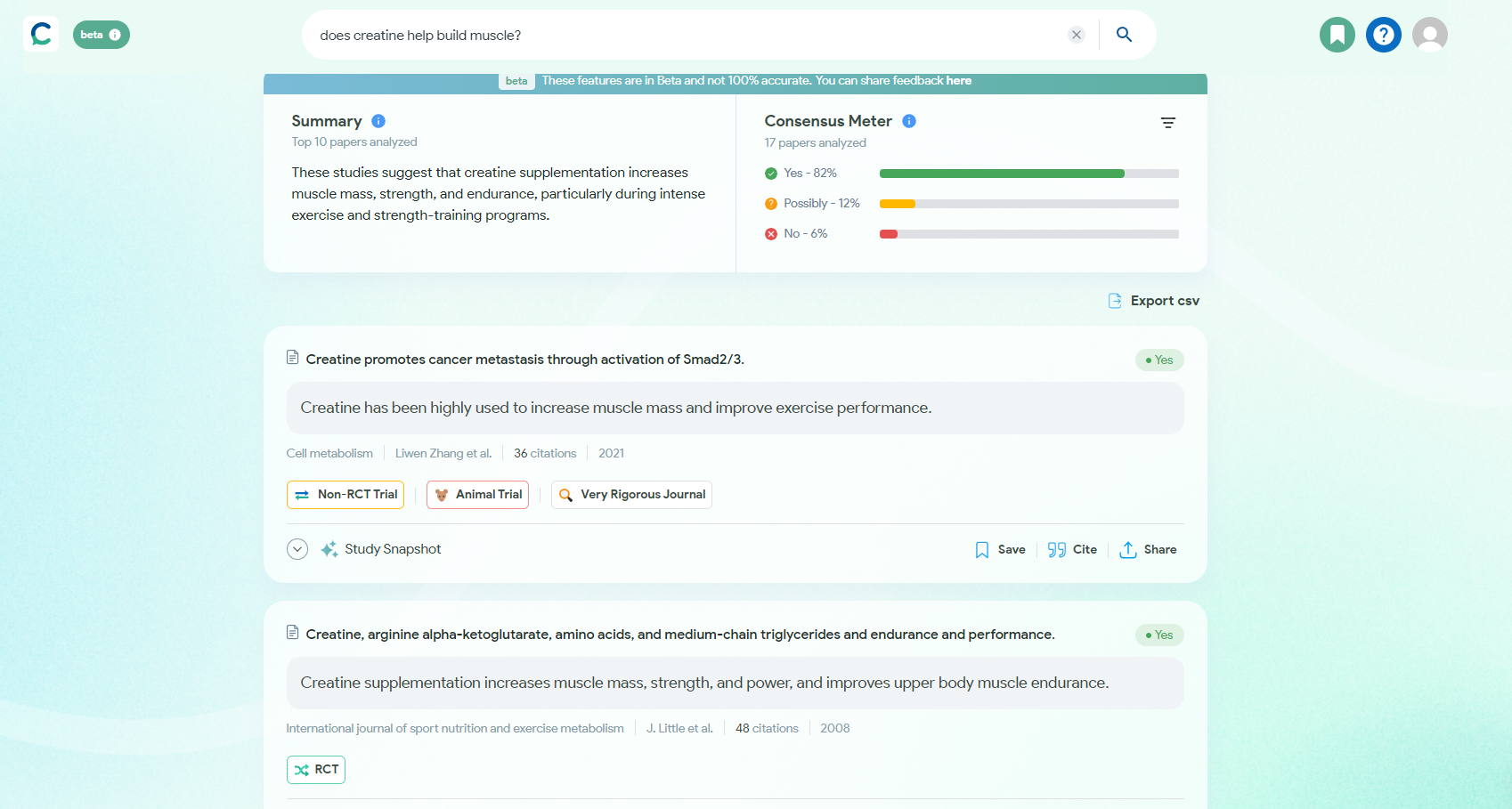
This tool is fantastic because it drastically cuts the amount of time one has to read to find whether a paper is relevant to use in a scientific report. It enhances teaching in that students can be more engaged with the material to what they want to learn about rather than trying to read a lot of papers only to find no relevance to the material. The tool also easily demonstrates the idea that a given question doesn’t always have a clear-cut answer in science. There are different perspectives to take into account, which may affect our understanding of the subject.
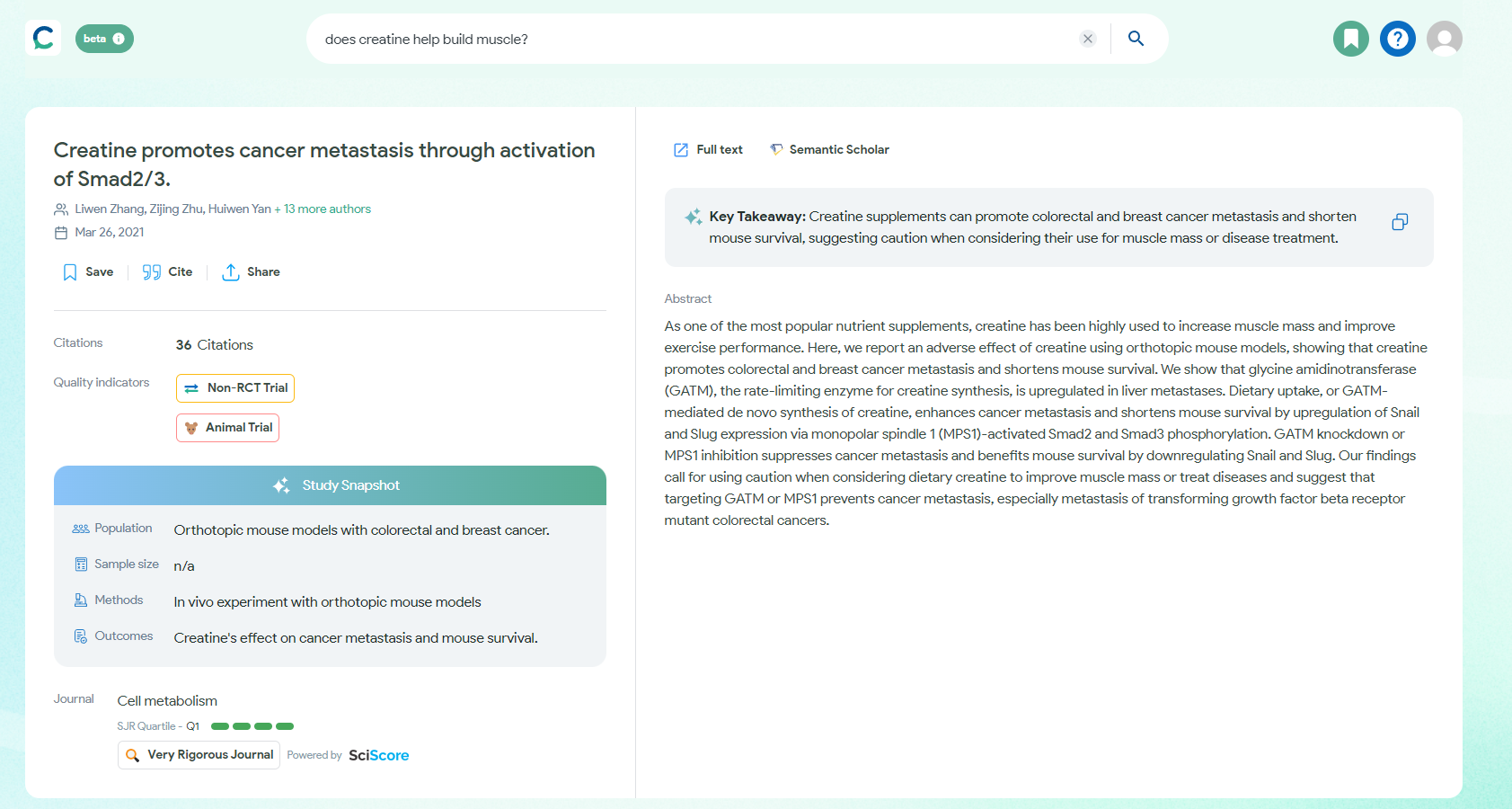
Of course, this is not to say that Consensus should be heavily relied on. During this point in time, the developers acknowledge that Consensus is a generative AI and may provide incorrect results. They also confirm the AI is only 90% accurate with its results and may exclude vital context. While I would introduce this AI to the classroom to get them engaged with the material, I would want to teach them how to read a scientific article properly.
I am uncertain how I feel about integrating AI into the education system. On one hand, there are plenty of AI tools that can certainly help students with their learning. They are tools that teachers can use to fulfill the Saskatchewan Adaptive and Inclusion documents. One example is the speech to text AI tools. There are also tools that can assist students in how they tackle a given subject. If a student does not have a creative mind, Dall-E and Midjourney can help shape their thoughts into a visual picture which the student can then use to express themselves or use on a given assignment, On the other hand, there are AI tools that could help students find an easy way getting something done without necessarily having to learn it. Students could use ChatGPT to insert a prompt for an English assignment, then hand it in to the teacher without doing the work or understanding the learning behind the assignment.
In the end, I suspect AI will play a role quite similar to the introduction of the internet back in the early 2000s. It will become a medium that will be used both for good and bad. My hope is that it will become a tool students can use to aid in their learning, rather than become a distraction and detriment.
Incorporating digital literacy in highschool science is an important step to focus on in a student’s learning. Science is the subject that looks at the natural order of the world. If a student has misinformed ideas, it can be a detriment to themselves and society as a whole. David Lazer and his colleagues even suggest in their paper “The science in Fake news“, misinformation can influence people towards cynacism and extremism.
Health Science 20 focuses on the human body and nutrition. A student without proper digital literacy can go on a diet from a random influencer without taking in the full consequences of what they are about to go through. Science 10 has a unit on humanities influence on the environment. If a student sees an article promoting the idea that nature hasn’t changed at all in the past 100 years, they might go on to continue a lifestyle that feeds into a destructive ecological cycle.
At the beginning of the given school year / semester, I would start the first couple of classes teaching about digital literacy in science. I would demonstrate that google can’t always give reliable answers (Source). Another source I would use to teach digital literacy would be Media Manipulation and Disinformation online and apply it to a scientific lens. Throughout the semester, I would also attempt to implement a current topic or debate to the appropriate subject (genetic cloning for bio 30, climate change for science 10, etc..).
I love puzzles, especially ones that involve logic. It’s a form of mental exercise that is sometimes lacking in life. It’s satisfying to stretch the muscles and find different possibilities to tackle a puzzle. And when the solution is found and the puzzle is complete, there is a silent yet cathartic release of dopamine in the brain that leaves you pleased with the work you put into it. Or if it was a puzzle you were working on for days and had a really easy solution, a loud cathartic groan can be heard along with the palms in one’s face. Puzzles are great.
This week, I went to Code.org and chose Minecraft Hero’s Journey Hour of Code. I was a bit confused at first as I thought I would be inputting the code for Steve (the character). I quickly realized I was inputting the code for the robot companion, which I should have realized had I read the instructions properly. Once I understood what was going on, I began to breeze through the puzzles, one by one. I then noticed the additional objective of retrieving the diamond before ending the puzzle. From that point onwards, the diamond was the priority before finishing the level. I finished all the levels within 30 min, which was great but also annoying as I wanted to complete more. The last level was a free play level, encouraging the user to create code using what they just learned. I fiddled around with it and made a loop. It was a bit more tedious than expected as I needed to cross over the river. I spent more time attempting to figure out how to create the loop than any of the previous levels. Part of that time was understanding some new commands that were not previously there before. The other part of that time was understanding where I went wrong, fix the mistake, then wait for the code to reach the fixed point. I eventually did create my loop and was satisfied to shut the program down. Overall, it was a great experience and a great introduction to coding for students.. It did a good job at keeping me engaged with the coding material with something I was familiar with (Minecraft texture).
I never had much coding experience growing up. I had a friend that dabbled in it from time to time, but I had no interest. It looked like a foreign language that I would never have to think about. When I came to the UofR, I had to take a computer science course, which meant I had to learn coding. The material itself was bland at first, but once I understood the building blocks, I had more fun with it. That being said, it was still stressful, especially when the code didn’t work out the way I wanted it to. I had a better appreciation for coding once the class was done and can see why so many people are fascinated by it. I think students are hesitant to learn coding because portrayals of coding in the media can be seen as “complicated” or “nerdy”. Websites like Hour of Code or Code Academy break the stigma, showing that the material can be broken down to digestible bite-sized portions and be relatable in their artistic endeavors.
As society leans more heavily into technology, it makes sense for students to learn about it prior to university. Coding is utilized everywhere, from computer programs to phones to cars. There are tons of job opportunities that come with it. Coding also allows students to think with logic using visual aids. They can see the consequence for each of their actions and can correct them accordingly. They are able to understand the logic for themselves without having to be told where they went wrong.
Hello hello! Today we’re looking at one of the resources ChatGPT recommended to me called Memrise. Now, I had never heard of Memrise up until the recommendation. But after some lengthy use, I gotta say, it’s pretty unique and cool.
One of the first unique things I saw were the videos, which were produced by native German speakers. Most of the ones I have encountered so far are short form videos, ranging from 15 to 30 seconds. Once the video was over, the app requested feedback on your level of comprehension. If you don’t understand what the video was saying, it’ll bank those key words to practice on later.
There is also a vocabulary builder, similar in function with duolingo in how it gamifies it. However, there are key differences. Again, there are native German speakers introducing the words or short phrases. It also not only provides a translation of the phrase, but also a literal translation, which is super helpful in how it all connects together.
The games themselves are slightly more difficult, which I appreciate, especially when it comes to learning new material. There is no punishment as well if you make mistakes. It simply marks it as a word you need to work on. You can even have the option to mark a word or phrase as difficult, which the program will remember later on. It keeps a whole progression on what videos and vocab lessons you’ve done and makes it accessible! I cannot stress that enough, especially given how much frustration I have with Duolingo on being a perfectionist to progress with the content.
Finally, something I was thrown off by at first, was the AI conversation bot. The app promotes having dialogue or text conversations with it. The app has specific AI conversation topics, such as ordering from a restaurant or working in a hotel. Even though it was daunting, I gave it a shot anyway. It was a bit rough, but I managed to produce 1-3 word sentences to keep the conversation going, haha. It was a humbling experience where I didn’t know exactly what to say, even though I’ve progressed decently well in German. There is a hint option as well, which will provide suggested answers to the AI’s questions. While I do think speaking with a native German speaker is a lot better than AI, this is a good alternative, especially if one is shy or not confident with other people around.
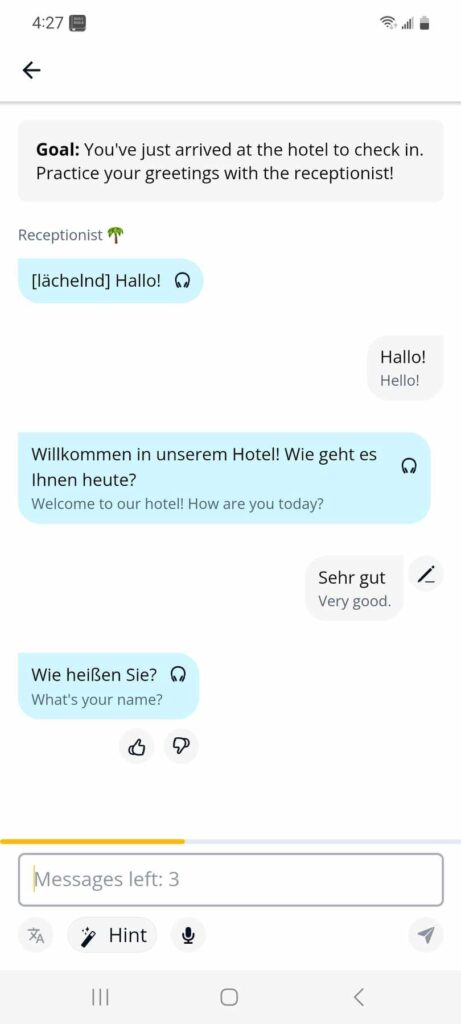
The only drawback I have is that in order to access all the content, you have to pay a premium subscription, but that’s nothing new. Otherwise, I would definitely recommend it. I think this is a great way on how AI can be integrated into the learning space for the better.
I don’t remember much education on cyber security or digital citizenship during my pre-university years. Most of my education surrounding cyber safety was through my dad, who was an RCMP officer and was aware of the dark side of the internet. I vaguely remember 3 instances of school-driven education around this topic.
One was the scare tactic based ads during middle school. When I watched them, I viewed them as informative rather than being scared of the internet. I learned to be aware of the choices I made on the internet and only contacted people who I knew. I also didn’t have Facebook, Instagram or any kind of social media until grade 11/12. This choice was partly due to my parents, but also partly due to my recognition that I didn’t need it. Most of my communication through middle and highschool was through gmail and the textplus/nextplus app on my ipod touch. I was satisfied with that level of communication until there was a need to upgrade it for school projects (Facebook messenger).
A couple months into grade 10, we had an assembly regarding the suicide of Amanda Todd. I remember watching the original video. I recall having a sense of shock and sadness at the time, questioning why or how someone could do that. We were aware of the concept of cyber-bullying in middle school, but Amanda Todd showed us what kind of repercussions cyber-bullying had. Although it was tragic, I learned that bullying didn’t have to be seen in the school for it to happen.
Finally, the last instance I remember was an assembly with The White Hatter. I don’t recall whether it was during middle school or highschool, but he did leave an impression. He advocated for online privacy and internet safety. He would systematically go through what a black hat or predator would do to achieve their goal, then give solutions and countermeasures against them. I found the methods black hats / predators used were fascinating and solidified my approach to the internet and how I used it. I would argue that while this could be a form of a scare-tactic, it was also informative of its approach.
I think the best way to approach digital citizenship is to be informative. Show that while the digital realm has a lot of positives to gain, there is also a dark side of the realm one needs to be aware of and that it can take various forms. The direct dark side reflects the “stranger danger” and cyber-bullying aspects while the indirect dark side reflects privacy agreements and invasions with various media platforms.
© 2025 Josh Wagner
Theme by Anders Noren — Up ↑